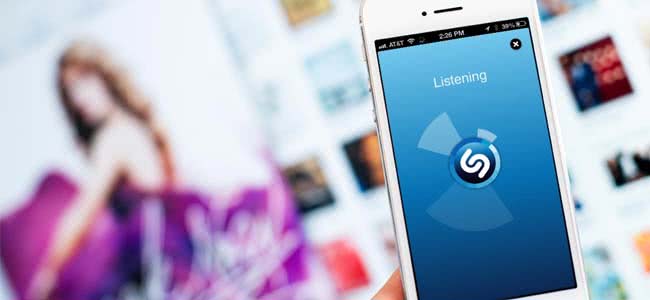Shazam was one of the first iOS apps to pioneer music recognition technology. Wanna know what that song was that’s playing in the restaurant? or who’s that soundtracking the TV commercial? Shazam subtly changed the cultural landscape by ‘listening’ to the music playing and identifying the artist and song by comparing it to a huge database based on listener habits.
Upon ‘tagging’ and identifying the tune, the handy app also directs users towards the option of buying the newly recognised tune from online digital stores like iTunes and Amazon, and as it turns out, the music recognition app is not only turning a tidy profit for these online stores, but is forming a sizeable share of the paid download market and netting plenty of profits for themselves in the process.
According to SPIN, Shazam generated US$ 300 million in paid digital downloads in 2012, from which the company derives a 1% share in sales commissions from the likes of Amazon and iTunes by linking mobile users directly to the online stores through the program. The statistics are derived from a presentation given by Shazam’s Executive Vice President David Jones to the National Association of Recording Merchandisers, as Digital Music News notes.
“We get a single-digit percentage revenue share on that [gross],” explained Mr Jones of the referral cut. “Thankfully with that number, it adds up to a revenue stream that helps pay the bills.” Additionally, Jones notes that the commission figure is growing year on year. “That’s growing triple digits, so it’s going to be double that every year,” he says. “It’s certainly been double over the last several years.” Shazam generated US$ 300 million in paid digital downloads in 2012, from which the company derives a 1% share in sales commissions from the likes of Amazon and iTunes.
According to Digital Music News’ calculations of the IFPI’s Digital Music Report from earlier in the year, sales of digital music topped nearly US$ 6 billion for 2012. Of that amount, 71% came from digital downloads (approx. US$ 4.117 billion). Meaning that Shazam accounts for around 7.2% of those sales, which equates to roughly 1 out of every 14 downloads are coming directly from Shazam.
Part of that staggering figure is owed to Australian success story Gotye, with SPIN noting that Shazam recently celebrated the deliver of over 5 billion tags, 11 million of which were for Mr Wally De Backer’s Kimbra-featuring duet, ‘Somebody That I Used To Know’.
There’s no doubt that a large proportion of those tags led to paid downloads of the ubiquitous chart-topping hit, which recently celebrated a year in the charts and calculated figures that have earned millions for Gotye, but also Luiz Bonfa, the deceased Brazilian guitarist who owns half the royalties to ‘Somebody…’ due the sampling of his ‘Seville’ (making a Brazilianaire out of the Luiz Bonfa estate).
Following Shazam’s paid download success with online stores, a recently forged partnership with music streaming service Rdio provides full streaming for tagged music via the streaming service thanks to a newly updated ‘Listen Free on Rdio’ link within the Shazam app, as TechCrunch reports.
Just as the Amazon/iTunes links direct to paid downloads, the Rdio link should mean more subscribers for the music streaming service, with users needing a paid subscription or the free 14-day trial to access the stream – currently available in the US, UK, Canada, Brazil, Mexico, and Australia.
Meaning there’s bound to be plenty of potential overlap between Shazam’s 120 million free users, and Rdio’s own 1 million monthly active users. Though unconfirmed, if Shazam gets a 1% commission cut from Rdio as it does from Amazon and iTunes, it means more niche revenue from impulse subscribers to Rdio. And more good news for the music streaming service after providing full streaming (along with Spotify) to users of the recently launched Twitter #music service.



































